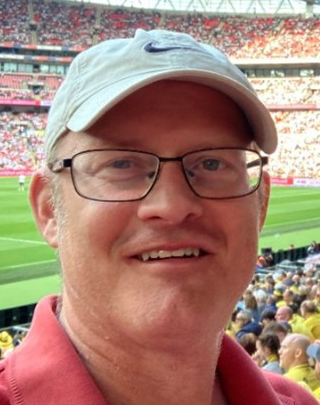Posted By: Kylee Spencer, PhD, Assistant Editor, AJHG
Each month, the editors of The American Journal of Human Genetics interview an author of a recently published paper. This month we check in with Alistair to discuss his recent paper “The impact of inversions across 33,924 families with rare disease from a national genome sequencing project.”

KS: What motivated you to start working on this project?
AP: I‘ve had an interest in structural variants (SVs) ever since working on microdeletions identified in array data from the Autism Genomes Project. Now that large clinical genome sequencing datasets are available via the 100k Genomes Project, this study provided the perfect opportunity to extend those interests by looking at more complex types of SV. As is often the case, there was also an element of good fortune (i.e. right time, right place). For one family brought to a local MDT meeting for discussion in early 2021, a strong clinical match for Greig syndrome prompted a suggestion to double-check the GLI3 locus. This turned out to be correct and this was one of the first inversions we encountered. I was also lucky to be able to collaborate with Jing Yu and Susan Walker, who both have considerable expertise with analysing SVs.
KS: What about this paper/project most excites you?
AP: Well, it turns out that complex SVs can be fun puzzles to solve. Coming from a research background, it was also pleasing to see many of the findings making an immediate impact for families, several of whom had undergone lengthy diagnostic odysseys. We understand that probes targeting the founder MSH2 inversion have now been included on a new MLPA panel in development – so it will be very exciting to find out how common that cryptic variant is across the United Kingdom.
KS: Thinking about the bigger picture, what implications do you see from this work for the larger human genetics community?
AP: We hope that our study will help promote a greater awareness of genomic inversions, both in research settings and in diagnostic laboratories. The two SVs involving MECP2 that were ambiguous with short read data (but solved by availability of ~20kb sequencing reads) highlight the utility of long reads for enhancing SV interpretation. Our RNAseq findings also pose the question of whether an RNA-first approach could be an effective strategy for picking up cryptic SVs – this is something we are already looking into further.
KS: What advice do you have for trainees/young scientists?
AP: For some projects, it can be beneficial to show patience when deciding on a publication strategy. In this case, preliminary findings were presented at the European Society of Human Genetics’ Annual Meeting in June 2022. Although writing was delayed due to the time taken to validate variants and extract clinical information, this lull meant that RNAseq and long-read genome sequencing data became available for several patients – this gave the study a whole new dimension.
KS: And for fun, tell us something about your life outside of the lab.
When not ferrying around children to various parties and weekend activities, I enjoy watching football, playing badminton and the odd bit of book vandalism. (Video credit: Genomics England Research Summitt 2022)
Alistair T. Pagnamenta, PhD is a postdoctoral researcher in the Oxford Biomedical Research Centre at the University of Oxford.
